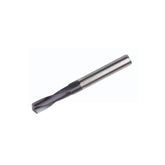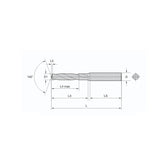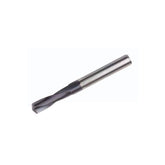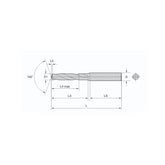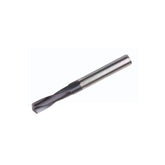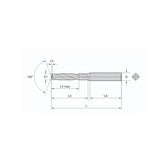There Are so Many Types of Probe Materials, How to Choose?
Probe Selection Guide - Mitutoyo
What is a Probe?
A probe is a measuring component that contacts the workpiece during measurement. It typically consists of a stem and a tip ball. Its working principle involves contacting the workpiece to cause displacement of the probe device. The measurement value is obtained based on the generated signal, thereby achieving precise measurement.
Key Considerations for Probe Selection
To ensure measurement accuracy, note the following when selecting a probe:
Probe Selection Tips
- Keep the probe as short as possible: Longer probes are more prone to bending, reducing accuracy. The positional accuracy of the probe is inversely proportional to the distance from the probe pivot to the tip ball. Thus, the shortest probe offers the highest accuracy.
- Use the largest possible tip ball diameter: A larger tip ball increases clearance between the ball and stem, reducing the chance of stem-workpiece contact. It also minimizes the impact of workpiece surface finish on accuracy.
- Minimize connection points: Using extension bars increases bending risk. Use as few accessories as possible in any program.
Probe Material Selection
Probe type and size selection depends primarily on workpiece characteristics. The material of the stem and tip ball is also critical.
Common tip ball materials include ruby, zirconia, and silicon nitride. Stem materials extend beyond steel to aluminum alloy, ceramic, carbon fiber, and more. How to choose?

With over 30 years of R&D experience, Mitutoyo offers 600+ probe and component types, delivering precision, innovation, and economy.
Below we share Mitutoyo's probe materials, their advantages, and suitable workpieces.
Tip Ball Materials

Tip: Selection must consider measurement method and workpiece material.
Ruby
Key point: Suitable for most workpiece materials
Ruby is hard, with a smooth surface, high compressive strength, and excellent resistance to mechanical wiping. Its low density minimizes tip ball mass, reducing false triggers from inertia during CMM movement/vibration.

Ruby is considered an ideal all-round material for high-wear spherical contacts, suitable for most workpieces. However, it may cause adhesive wear when scanning aluminum or cast iron; other materials are recommended in these cases.
Zirconia
Key point: Suitable for cast iron workpieces and rough surfaces

Zirconia is a ceramic composite. Zirconia contact points have unique surface properties, making them ideal for high-intensity scanning of rough surfaces (e.g., cast iron). Its hardness and wear resistance are comparable to ruby, best for cast iron scanning.
Silicon Nitride
Key point: Suitable for aluminum and aluminum alloy workpieces

Silicon nitride is an extremely hard, wear-resistant ceramic with the smallest surface roughness among tip ball materials. It resists adhesion to aluminum, causing minimal adhesive wear. Note: It wears significantly on steel surfaces, so limit use to aluminum alloy workpieces.
Stem and Base Materials

Tip: Maximize stem rigidity to suppress bending.
Steel

Steel is the preferred material for high-precision probes, ensuring extreme accuracy. It offers excellent strength and is the standard for probes and reference detection elements.
Ceramic

Ceramic is light and extremely hard, ideal for stems (especially long ones). It has high thermal stability with low expansion even at high temperatures, suitable for production environments.
Tungsten Carbide

Tungsten carbide (hardness near diamond) is ideal for anti-bending stems in stable laboratory environments, suitable for most standard applications.
Carbon Fiber

Carbon fiber is lighter and stiffer than tungsten carbide, ideal for long probes. Its near-zero expansion below 45°C makes it excellent for workshop use.
Carbon Fiber Tube

Carbon fiber tubes have near-zero expansion between 15–40°C. Mitutoyo uses them for high-quality probes, connectors, and extension bars.
Aluminum Alloy

Aluminum alloy is light and stable, commonly used for extension bars. Due to thermal expansion, use in temperature-stable measurement rooms.
Titanium

Titanium offers high rigidity, hardness, stability, low density, and light weight. Mitutoyo applies it to bases, connectors, and extension bars.
